Berks County’s desire for an airport began in the wake of World War I. By the late 1920s pioneering pilots like Charles Lindbergh and Amelia Earhart thrust aviation into the spotlight. Capitalizing on this popularity, small airfields like Whander Field in Ontelaunee Township popped up in 1927 and Madeira Field in Muhlenberg Township in 1929.
While these first fields paved the way for the introduction of aviation in Berks County, many felt that neither were close enough to Reading proper and that the greater Berks County area should be served by a municipal airport. Business men and prominent leaders in the community lead the effort. They demanded that Reading be put “on the map” by pioneering air traffic as a means of commerce and pedestrian travel.
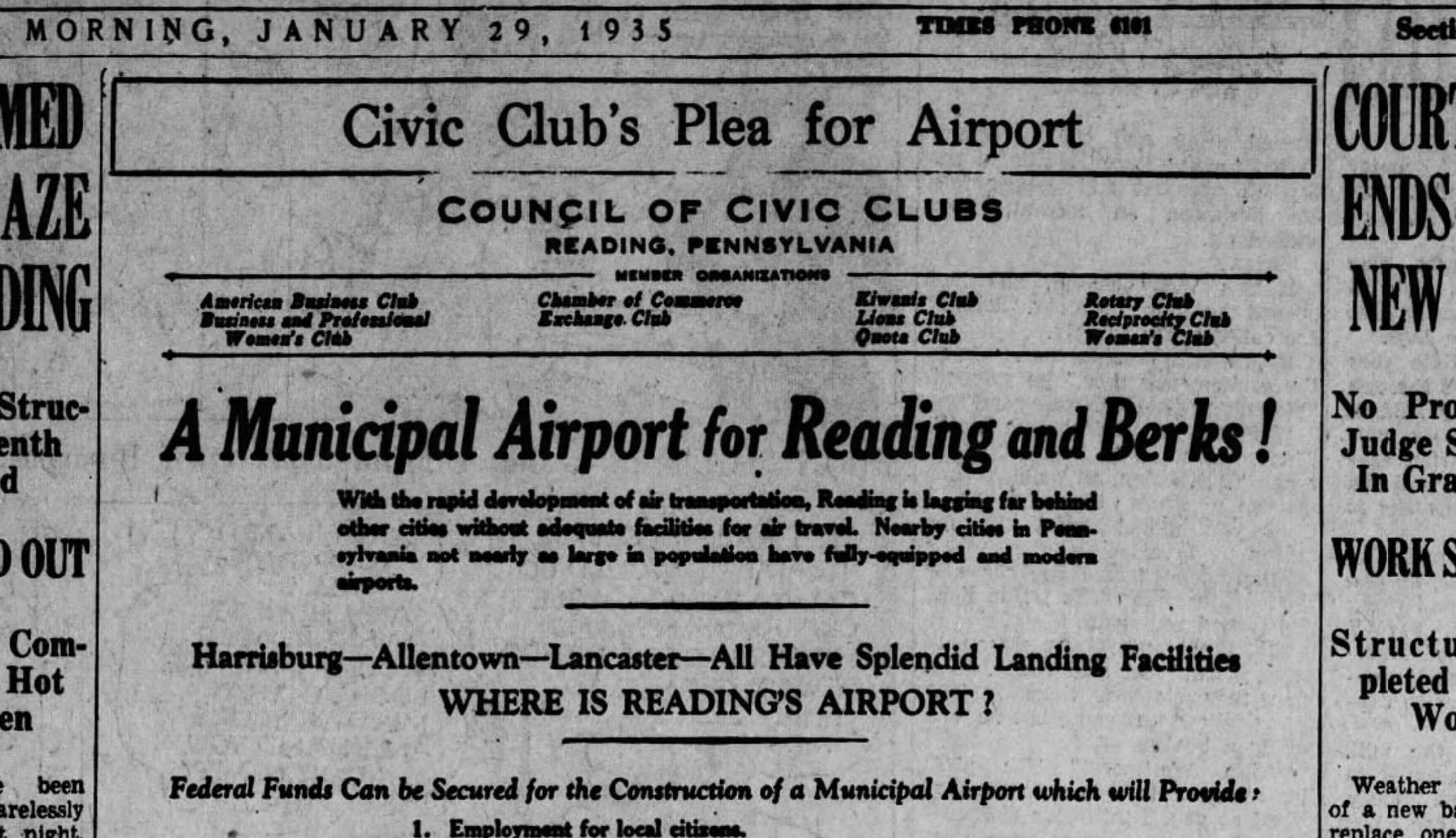
In the 1930s President Franklin Roosevelt began the Works Progress Administration to create jobs and improve infrastructure as a means to curb the economic depression that began in 1929 with the plunging stock market. In 1935 the WPA announced it would be willing to contribute to a Reading airport project as long as it was built on publicly owned land. The site chosen in Bern Township just over city lines consisted of three farms and was purchased jointly; the cost split 50/50 by the city and county in February 1936. Construction began in the summer of 1936. The airport was opened to air traffic in August 1939 and dedicated officially that October.
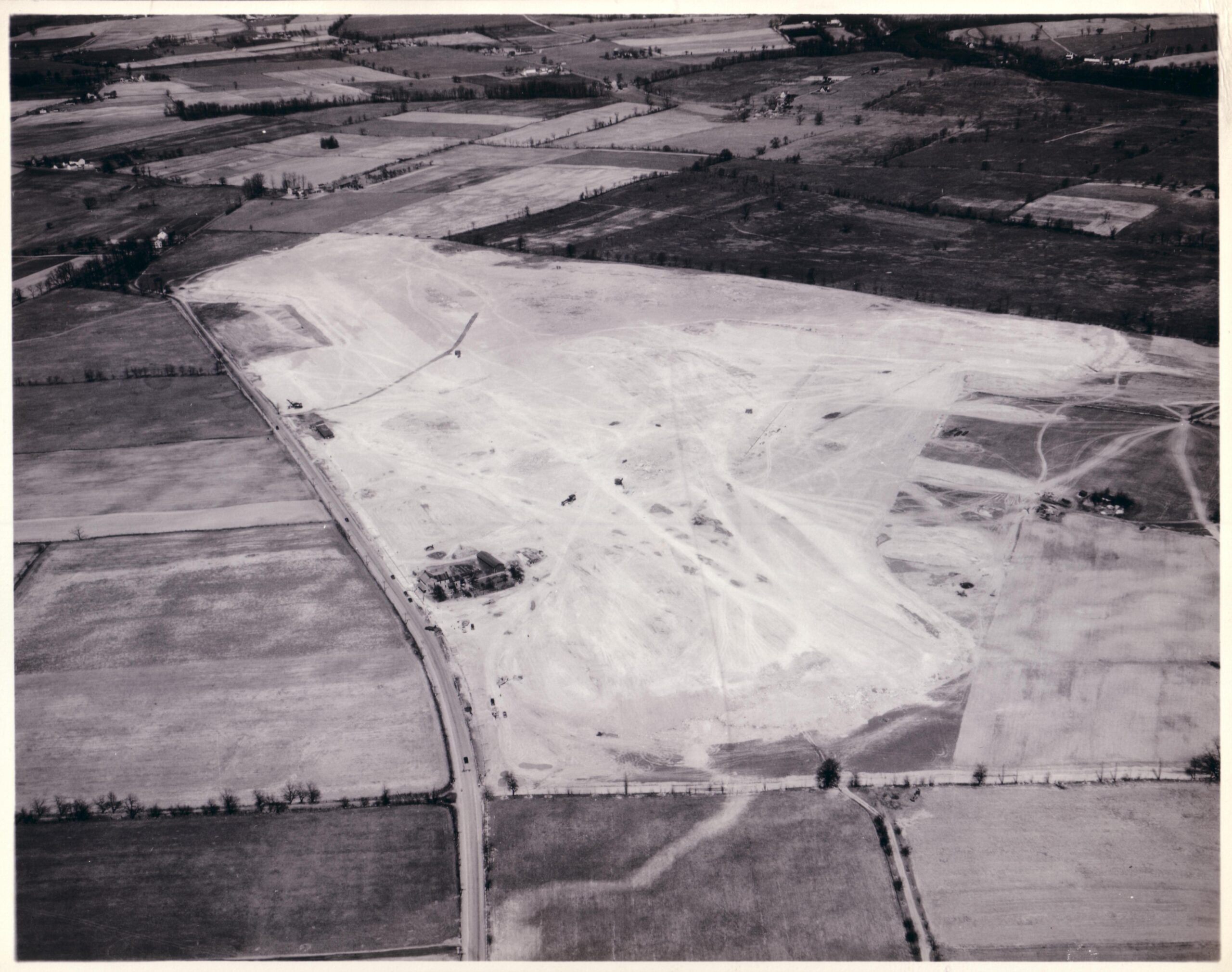
By the time the Airport was finished World War II had just begun, although the United States would not get involved for another two years. In 1942 the federal government utilized Reading as a base of domestic military operations and quickly constructed additional infrastructure on the site to support war efforts. This infrastructure included a POW camp.
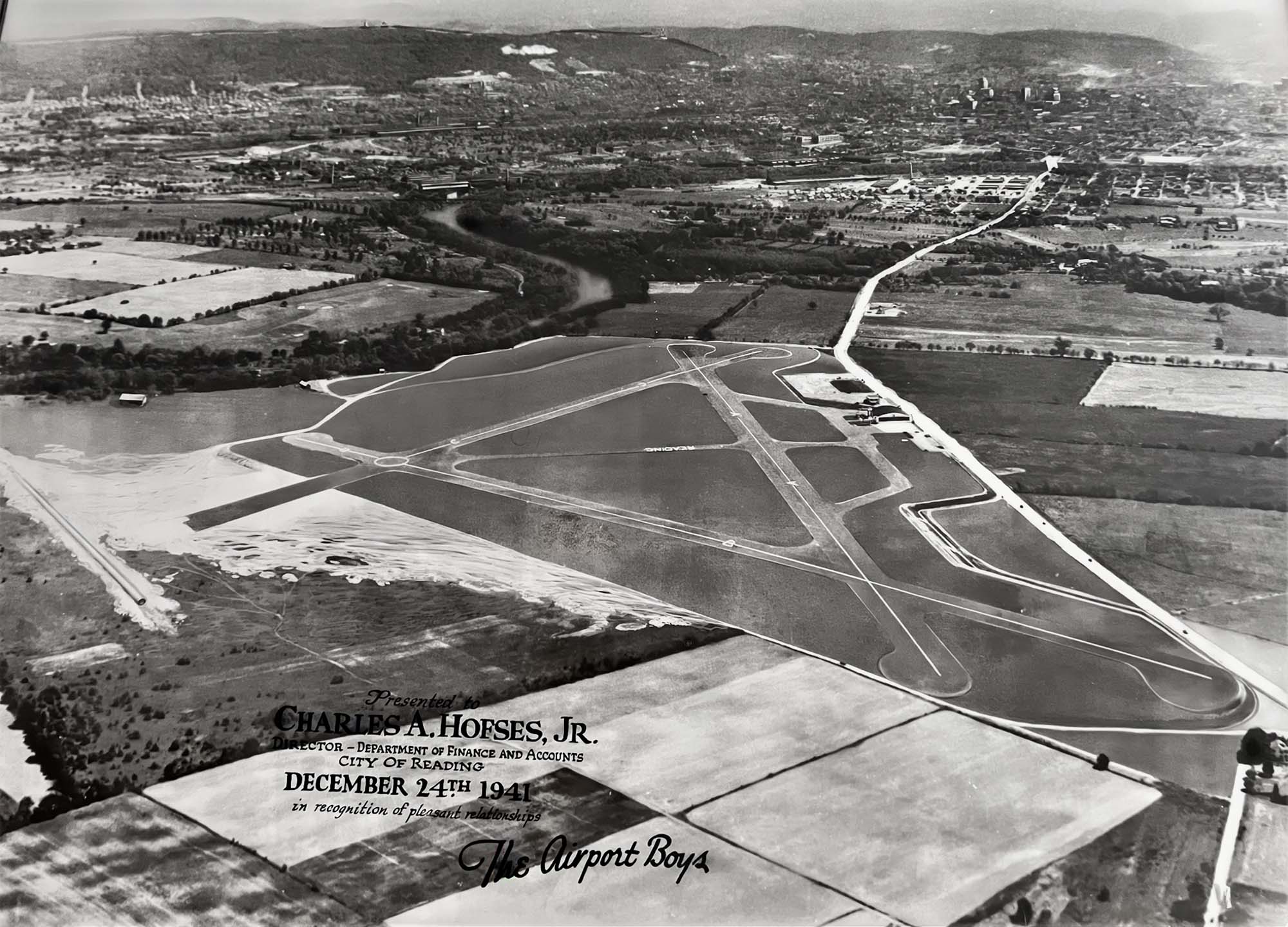
This original hangar is allegedly haunted, though I have found no record of a death occurring within the structure, plenty of crashes and subsequent deaths have occurred around the airport. The story goes that as an employee was closing up the airport for the night, he switched off all of the lights, including the light at the top level of the observation tower. As he was driving away down Bernville Road, he noticed in his rearview mirror that the light was back on.
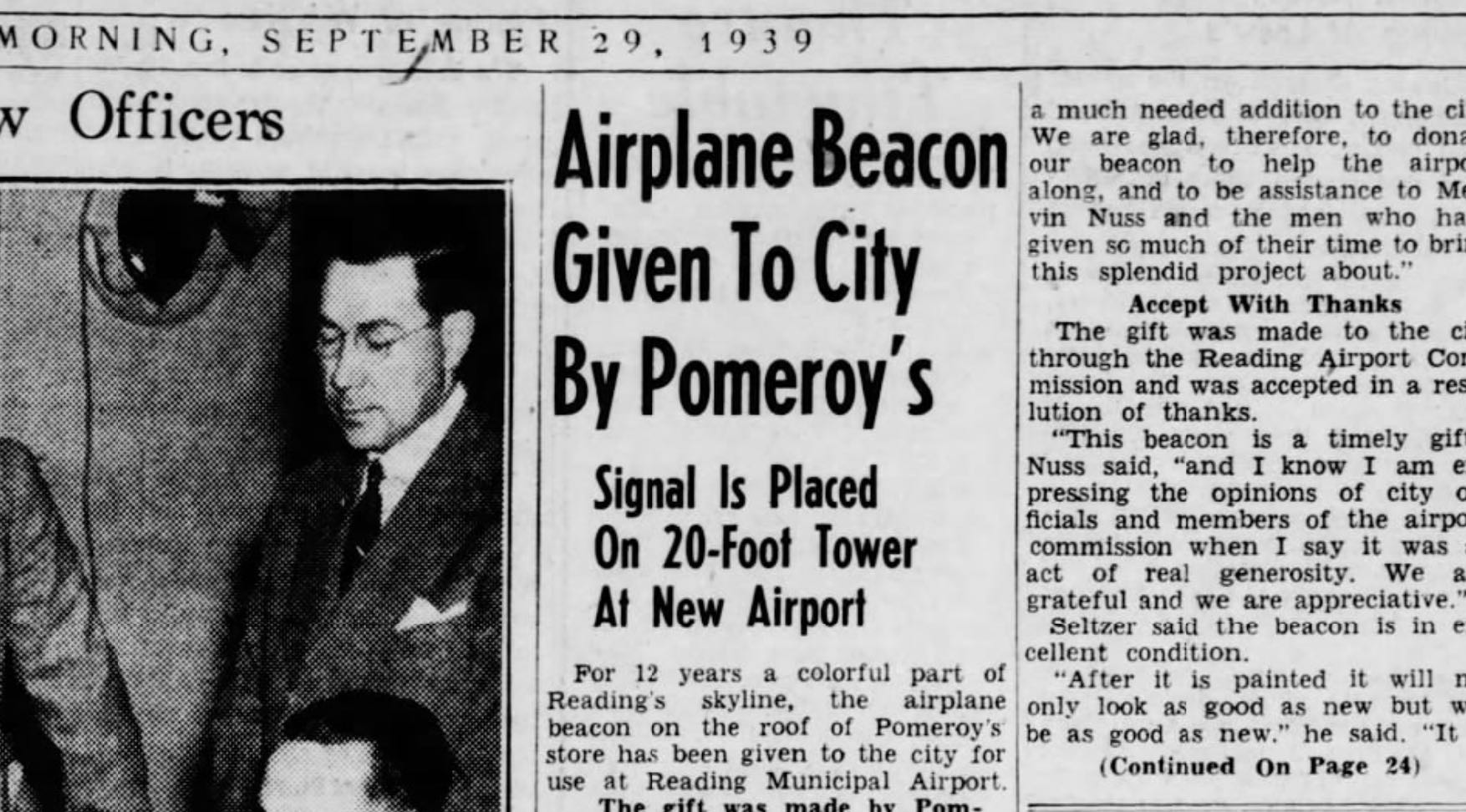
The beacon that sits on top of the hangar was donated to the airport by Pomeroy’s Department store. It sat on top of the Pomeroy’s building at 6th and Penn Street downtown beginning in 1927 to guide air traffic. Pomeroy’s discontinued using it sometime after the courthouse was built in 1931, as the courthouse obstructed the beam in its direction, and many who worked in the building complained about the bright light disturbing them.
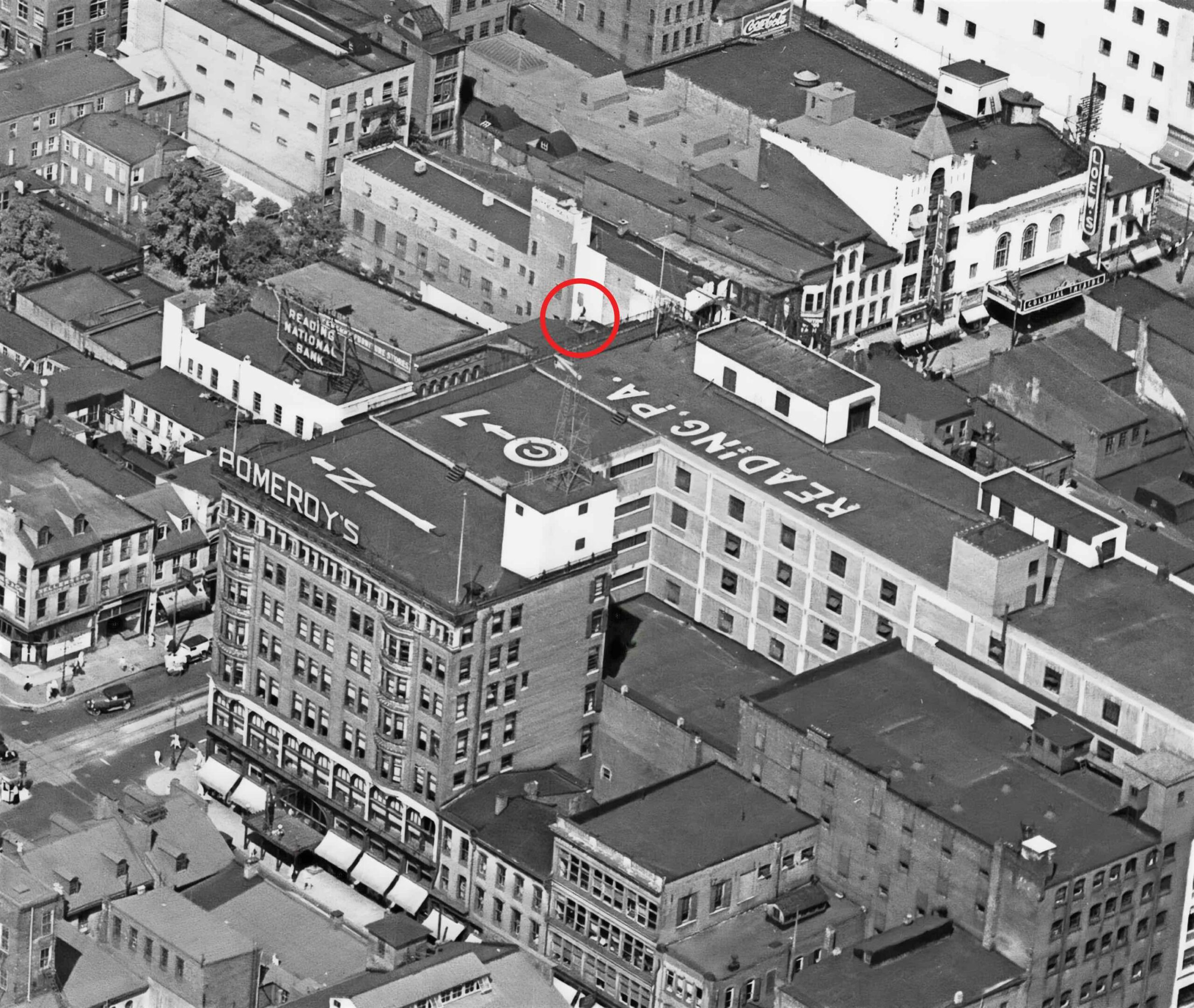
This structure housed planes and passengers waiting for flights until the new terminal building was completed in 1961. Its amenities included office space, a pilots lounge, mechanic shop, passenger lounge, bathrooms and an observation tower.
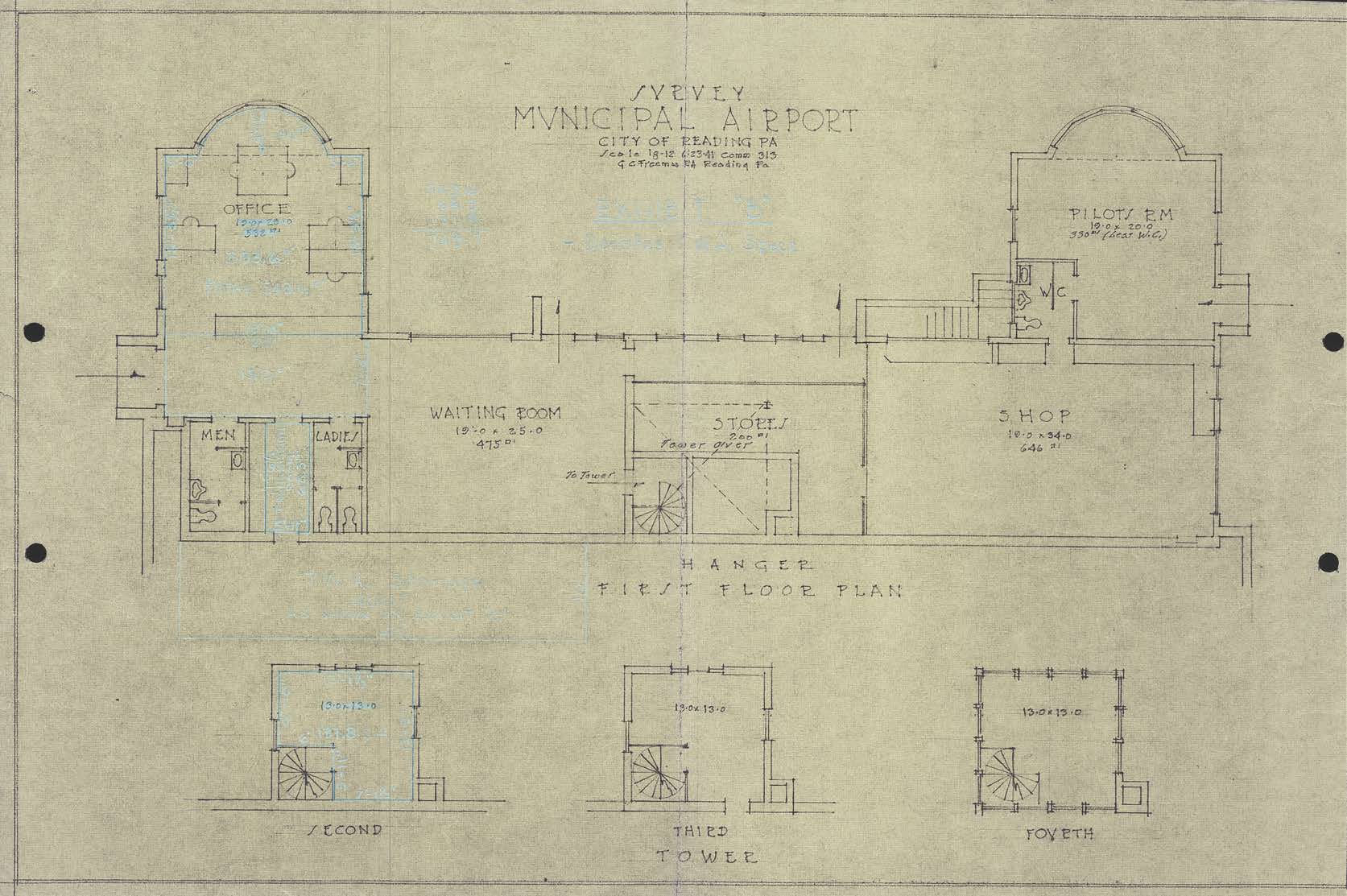
Currently it still houses planes but change is again on the horizon. Airport Director Zackary Tempesco says future plans include updating this structure with new paint, flooring and safety updates for occupancy, while committing to staying true to the historical integrity of the building.
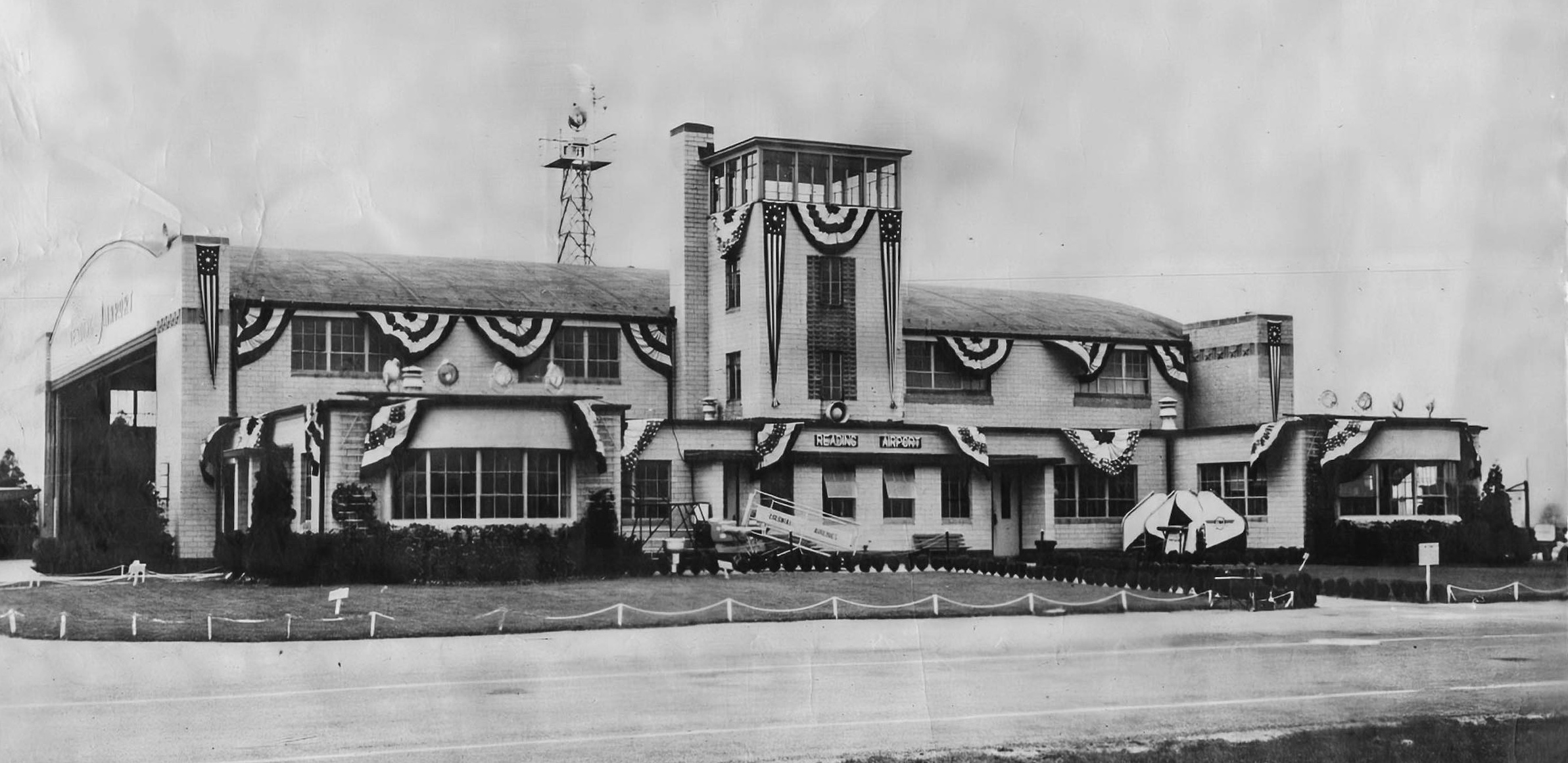
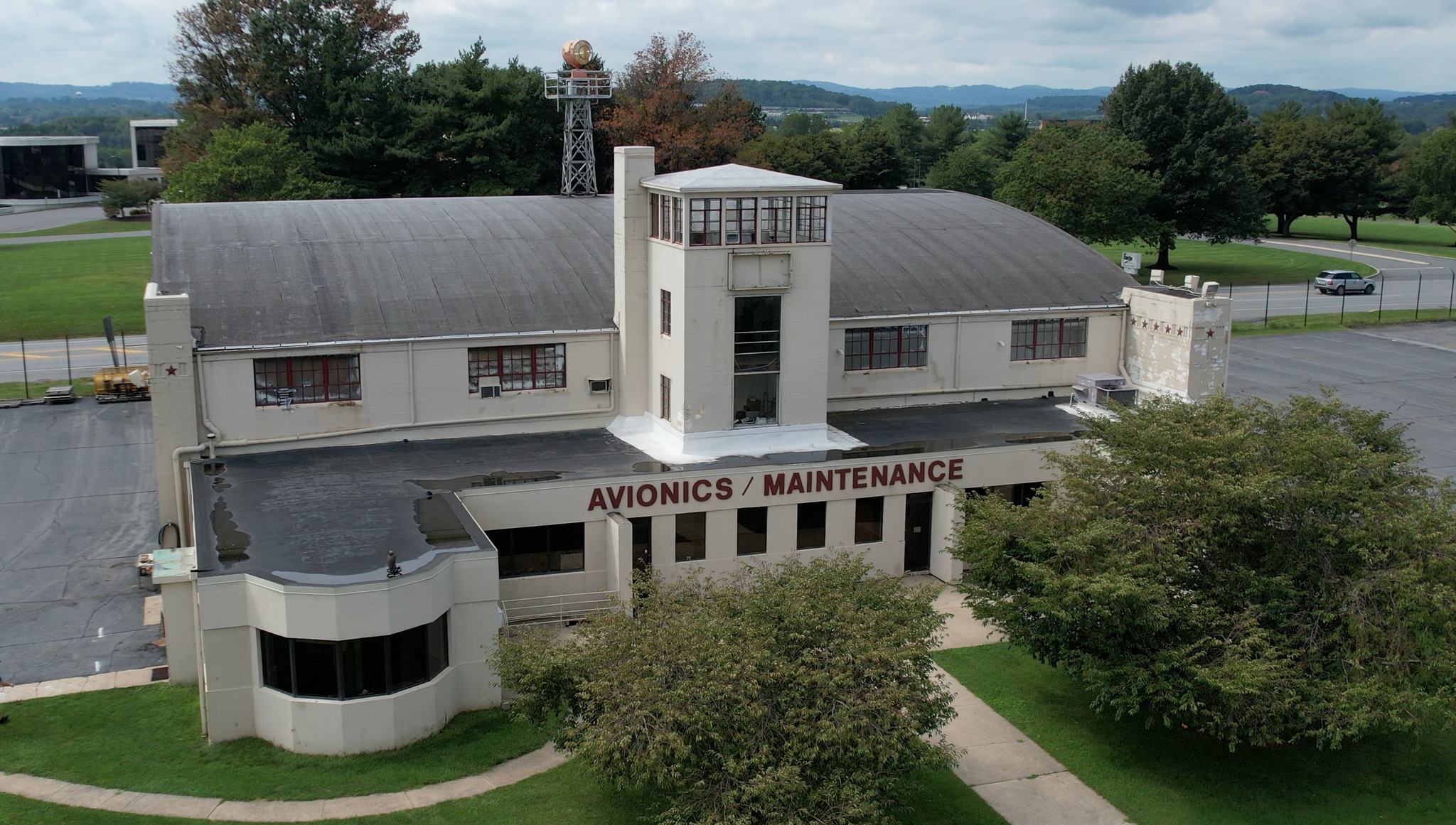
I have noticed that any mention of the airport elicits a response of wishing passenger flights were still available from Reading Regional. It is important to understand a few things about this topic; passenger flights from Reading Regional ceased around 2004 in a post-9/11 environment. The fact is we were flying less and it was no longer economically feasible for these airlines to provide service to us. Two decades have passed, but that issue remains. While Reading Regional Airport has remained open and committed to exploring scheduled service options; it ultimately has to be profitable for the airlines to provide to us. Mirroring when commercial aviation broke its way into the scene in the 1920s, it was the cries from local citizens and businesses that got the ball rolling. Nearly a century later, maybe it is up to us to get it back.
The Second Annual RDG Aviation Career Fair will be held on Saturday October 21st 2023, in the RDG Terminal Building between 9am-5pm. Find out more information here

My dad took the Allegheny Commuter out of RDG over to PHL several times a month. In those days we waited for him at the outside gate and then we’d walk back through the terminal together. We loved spotting those planes!
The article mentions that the hangar building also housed passengers until the “new” terminal was opened in 1961. There was a separate terminal building prior to that “new” one, the building now occupied by Olsen Design Group next to the Greenfields Fire Company.
Hi Michael,
The building that now houses Olsen was the airport restaurant. As far as I know it was never used as a terminal as it’s a much smaller structure.